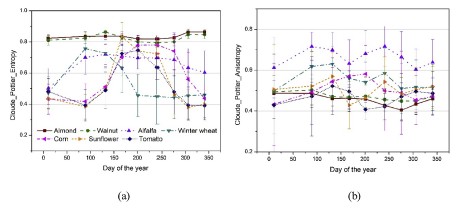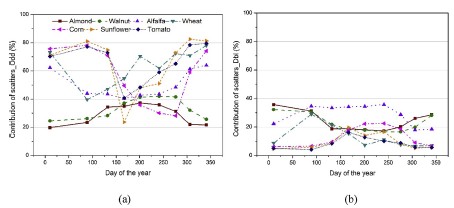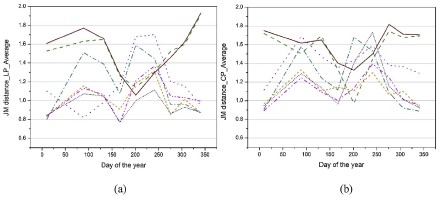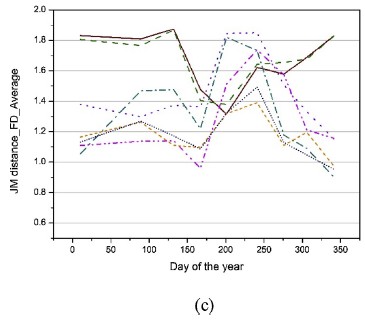Remote sensing has been considered as an effective means for crop growth monitoring due to its timely updating and complete coverage. Synthetic aperture radar (SAR) is receiving increasing attention since SAR instruments can acquire data regardless of the weather conditions and cloud cover by operating at wavelengths that can penetrate clouds. In theory, crop structure should be better characterized by long wavelengths (L- and P- band) than short wavelengths (X- and C-band). However, there have been very few studies of crop characterization using full-polarimetric L band SAR.
Recently, researchers at Northeast Institute of Geography and Agroecology of Chinese Academy of Sciences explored the potential of L-band fully-polarimetric Uninhabited Aerial Vehicle Synthetic Aperture Radar (UAVSAR) data for crop monitoring and classification. Full season polarimetric signatures, as well as scattering mechanisms, for several crops, including almond, walnut, alfalfa, winter wheat, corn, sunflower, and tomato, were analyzed with linear polarizations (HH, HV, and VV) and polarimetric decomposition (Cloude–Pottier and Freeman–Durden) parameters, respectively.


Fig. 1. Temporal variation in average backscattering values for crops over linear polarizations (a) HH, (b) HV, (c) VV; Note error bars denote standard deviation.
Permanent fruit crops (almond and walnut) and alfalfa demonstrated stable radar backscattering values across the growing season, whereas winter wheat and summer crops (corn, sunflower, and tomato) presented drastically different patterns, with rapid increase from the emergence stage to the peak biomass stage, followed by a significant decrease during the senescence stage. In general, the polarimetric signature was heterogeneous during June and October, while homogeneous during March-to-May and July-to-August.


Fig. 2. Time-series variation in relative contributions (%) of (a) surface scatter, (b) double-bounce scatter, and (c) volume scatter derived from the Freeman-Durden decomposition.
The scattering mechanisms depend heavily upon crop type and phenological stage. The primary scattering mechanism for fruit crops was volume scattering (>40%), while surface scattering (>40%) dominated for alfalfa and winter wheat, although double-bounce scattering (>30%) was notable for alfalfa during March-to-September. Surface scattering was also dominant (>40%) for summer crops across the growing season except for sunflower and tomato during June and corn during July-to-October when volume scattering (>40%) was the primary scattering mechanism.


Fig. 3. Mean JM distance for each crop to the others through the year derived with (a) linear polarization bands (HH, HV, VV), (b) Cloude-Pottier parameters, (c) Freeman-Durden parameters.
Crops were better discriminated with decomposition parameters than with linear polarizations, and the greatest separability occurred during the peak biomass stage (July-August). All crop types were completely separable from the others when simultaneously using UAVSAR data spanning the whole growing season. The results demonstrate the feasibility of L-band SAR for crop monitoring and classification, without the need for optical data, and should serve as a guideline for future research.
Reference:
Li, H.P., Zhang, C., Zhang, S.Q., Atkinson, P.M. 2019. International Journal of Applied Earth Observation and Geoinformation. 74 (02): 45-56.
Contact:
LI Huapeng Ph.D.
Northeast Institute of Geography and Agroecology, CAS
Tel:85542230
E-mail:lihuapeng@iga.ac.cn